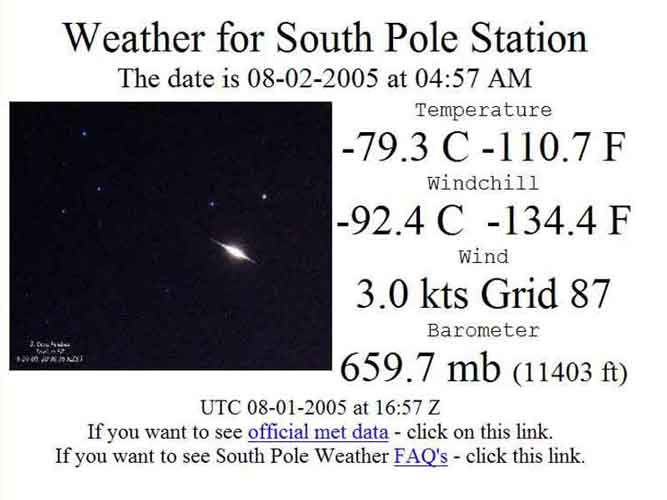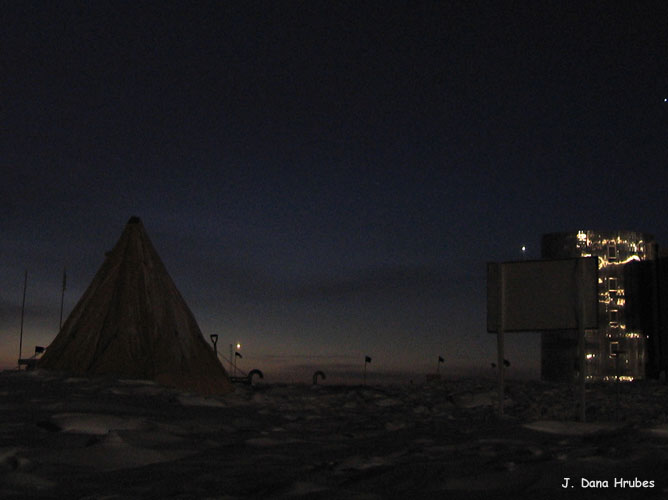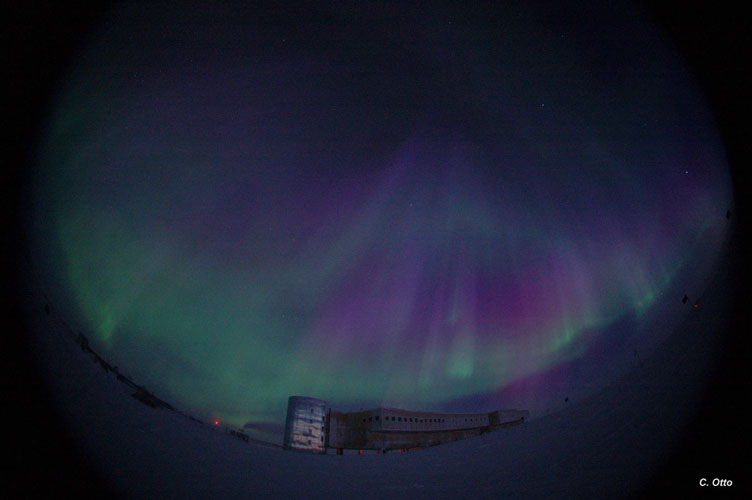
The low temperature for August, 2005: -110.7 F (-79.3 C) , only a few degrees above the
freezing point of carbon dioxide at this elevation

The
low temperature for August, 2005: -110.7 F (-79.3 C) , only a few
degrees above the
freezing point of carbon dioxide at this elevation
August at the Pole - Cold and a
Glimpse of the Light of Dawn
August is
historically the coldest month and also the month when we begin to see
a bit of the light of dawn, although sunrise is not until about
September 21. Our low temperature for the month was -110.7 F which is a
new low temperature record for myself. Even at these temperatures, I
still had my 2-1/2 mile walk to the science sites, and it was actually
quite comfortable wearing only my Carhart jacket instead of my big red
parka, because the winds were low. I was hoping to break the all time
Pole record of -117.0 F, which is just around the freezing point of
carbon dioxide at this altitude. By mid-month we were just
starting to see a hint of twilight and in the third photo, near the end
of the month, the brightness was increasing. dawn light-1
dawn light-2
dawn light-3
As many of you know,
Venus and Jupiter converged in the sky at the end of August. At the
pole, Venus was to the left and below Jupiter as it converged. This is
the opposite that observed in the Northern Hemisphere, because we are
observing the two planets from the bottom of the world.

Venus will approach Jupiter within less than 2 degrees on September 1. Venus-Jupiter, August 26th over the new elevated station Venus-Jupiter, August 29th to the right of the SETI optical telescope Venus-Jupiter, August 30th to the right of the new elevated station

A Real-Time Photo of South Pole Station as Seen from the ARO Building (live when satellite is up)
A Comprehensive
South Pole Web Site by Bill Spindler
Winterover Web
Pages
(Bill Spindler's List)